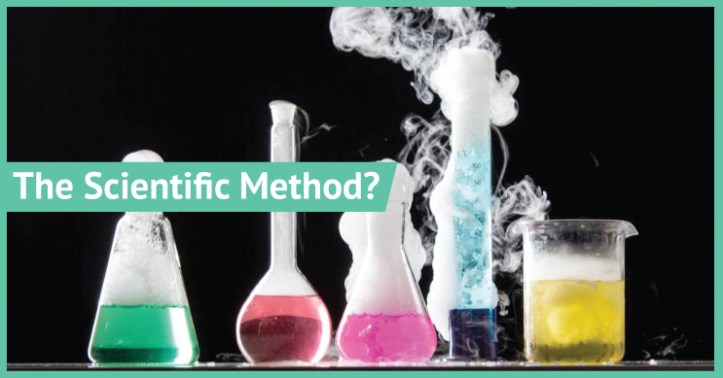
Science is best perceived as a systematic way of thinking that is based upon an epistemology underpinned by reason, evidence, and logic. It is a tool for understanding the social and natural world and constitutes the body of knowledge of these worlds. Science is not perfect, nor does it pretend to be especially because, as we shall see shortly, the enterprise is constantly updated and open to revision, correction, and even rejection.
The scientific method generally involves generating and testing a hypothesis, using data gathered through experiment to update and refine the hypothesis, and, ideally, reaching a generalizable theory to explain why the hypothesis is true. The scientific method can be broken down into the following steps:
1. Observation – This is the beginning step that requires one to make observations about the world. This could be an unexpected observation made in fieldwork, or in the laboratory, or it could even be something one observes within her everyday experience. For example, one might note that a pear left in a fruit bowl goes off (or rotten) quicker than if it is refrigerated.
2. Question – The subsequent step has the researcher turn the observation into a question. Using our analogy of the pear we might ask: “Why does the pear go rotten quicker in the fruit bowl than in the refrigerator?”
3. Research – This step assists the investigator in finding out if other researchers have asked the same or similar question(s). The idea is that such data might assist the researcher herself.
4. Formulate a Hypothesis – The researcher now attempts to create a testable hypothesis by making a prediction as to what is causing an occurrence. A hypothesis might be: “The cooler temperature in the refrigerator stops pears from going rotten.”
5. Develop Testable Predictions – Predictions need to follow logically from a hypothesis, be specific, and be open to testing through experimentation. For instance, “If temperature affects pear ripening, a pear kept at 20 degrees Celsius will go rotten quicker that one kept at 6 degrees Celsius.”
6. Gather Experimental Data – The researcher now gathers data to see if it is consistent with the hypothesis. This requires that the experiment is carefully and thoughtfully designed so as to ensure that there are no explanations for the outcome other than the one the researcher is interested in.
7. Analyze the Data – This step requires that the researcher analyzes the data statistically to ensure that the data is not a result of random fluctuation. The ideal is for experiments to use as large a sample size as is feasible.
8. Hypothesis Supported – If the results concur with the predictions, confidence in the hypothesis increases. Hypotheses can never be proven as future experiments and tests could refute it. However, the more empirical and experimental support one has for a hypothesis the more confident one can be in it.
9. Refine, Alter, or Reject – Alternately, if the results do not support the predictions it is likely an indication that one needs to redo the experiment or refine, alter, or reject the hypothesis.
10. Peer Review – This is the final step in the scientific method and it involves researchers whose writings about their findings are reviewed by other experts in the field. These reviewers are looking for problems in the experiment’s method or the conclusions of it. If the experiment is accepted then the study is published and becomes available for others to read.
It is important to remember that the scientific enterprise is an ongoing process. Researchers are constantly producing new data and theories. Scientists are aware that their work is likely to be superseded by future experiments and tests.
I remember learning about this at college when we did Research Methods. This just brought it all flooding back 😛
[…] and foremost sociology is a science that requires data collection and data analysis. Conclusions must be drawn from obtained data in a […]
[…] the religious, still shared similar beliefs. Why, Tylor asked, if modern people are aware of science do their beliefs not conform more to this intellectual progress? Instead most still believed in […]
[…] were supernatural superstitions deemed an appropriate explanation as science became the preferred method for obtaining truth. As such, there is every reason to expect unprecedented challenges to continue […]
[…] social phenomena as natural phenomena or as a part of nature, it opened itself to study through the scientific method, thus rendering sociology akin to the sciences of biology and physics. Just as these latter […]
[…] of these religions have also challenged normative Western approaches to science which might, for example, take the form of a systematic fusion of science and religion and […]
[…] For example, a major constituent of “belief in truth and method” is what we know to be science, hence why science has been met with significant opposition from postmodernist theorists. Many of […]
[…] church opposed was a general, multifaceted direction of inquiry from various scholars applying scientific methods to the study of religious history and issues (2). Modernists were both internal and external to the […]
[…] same is easily said of science as scientific explanations and legitimations have long since replaced religious explanations. When […]
[…] from sense experience and observation) and many of them shared interests in thinking about how science and scientific methodology could reshape […]
[…] envied those who believed in “the existence of a Supreme Being” but maintained that science and reason had made it “impossible to accept the premise of the existence of such a Supreme […]
[…] objects to Loftus’ view arguing that he misunderstands the role of science. Science, maintains Rauser, can “study the universe once it exists, but it can never explain what […]